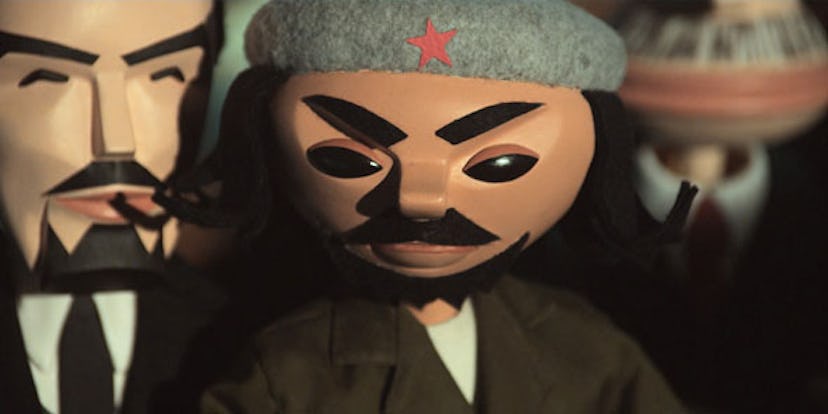Poli Sci 101
For artist Pedro Reyes, Marxism and capitalism are prime-time entertainment. Kevin West gets indoctrinated.

If the revolution is to be televised, then Pedro Reyes could well be its director. The Mexican artist has spent the past two years creating a television show called Baby Marx, which uses exquisite handcrafted Japanese puppets to stage a sometimes vicious but often hilarious debate between Father of Capitalism Adam Smith and Champion of the Proletariat Karl Marx. Guest stars include Che Guevara, Lenin, Mao, and John Maynard Keynes—think of it as Sesame Street for budding revolutionaries ages four and up.
“The role of TV at the core of the family is that of an electric nanny,” says Reyes, who has two young children of his own. “I was interested in providing the content to create a kind of radical pedagogy.” Reyes is himself a radical example of a type once widespread on university campuses in Europe and South America: He’s wellborn and utopian in thinking and speaks several languages. “At our present stage of civilization, we have assimilated capitalism as the natural way the world has to function,” he says via Skype from his Mexico City studio. “But it has also become more and more obvious that the collateral effects of capitalism are having a terrible environmental and social impact on the world.”
Modern-day schoolkids
Capitalism may stink, but the Marxist alternative collapsed with the Soviet Empire. So why not, Reyes thought, revive Smith and Marx from their graves, introduce them to each other, and make them answer for Joseph Stalin, Bernie Madoff, and other unintended consequences of their theories? “Kind of screwball comedy,” says the artist.
With help from Japanese curator Akiko Miyake and backing from Mexican producer and art collector Moisés Cosío, Reyes commissioned his wooden dramatis personae from the master craftsmen of Hitomi-za, a Japanese group founded in 1948 to continue ancient puppeteering traditions. Reyes scripted the series in English and set the action in a library equipped with a magic microwave oven, the Smart-O-Wave, that becomes a portal through which Smith, Marx, and the others enter the present to meet a group of schoolkids who pester them about how to get rich and ask why there have to be poor people in the world.
Reyes, 38, had a rather high-toned education from an early age. His parents, both chemical engineers, asked him to elaborate on his childhood drawings of spaceships by executing a set of blueprints for how to build them; his grandfather used tales from Greek mythology to create algebra problems for him to solve. Reyes went on to study architecture at the Ibero-American University in Mexico City, where his early projects showed a decidedly conceptual bent. When an assignment called for him to build a bridge that could transport one kilo across a span of 50 centimeters, he created a contraption to heat water with Bunsen burners and carry the vapor through a series of glass tubes.
Today, in the context of the international art world, Reyes is part of an emerging generation of artists who are reinvigorating social activism. ForYourArt’s Karen Marta, the New York–based consulting producer for Baby Marx, says, “There’s a renewed interest in the Eighties activism of Félix González-Torres and Gran Fury,” the collective behind Act Up’s iconic AIDS-awareness campaigns. “The relevance of that work comes from its migrating outside the white cube gallery to other cultural spaces, like billboards, concerts, or, for Baby Marx, the Internet.”
Reyes says the show, which will be viewable online by the end of this year, aims to spark curiosity in a young audience—and perhaps older TV junkies as well. “There’s an endless amount of information we can absorb,” he notes. “If people can keep track of all the celebrity gossip, there’s no reason we can’t also assimilate the key concepts of economic philosophy.”